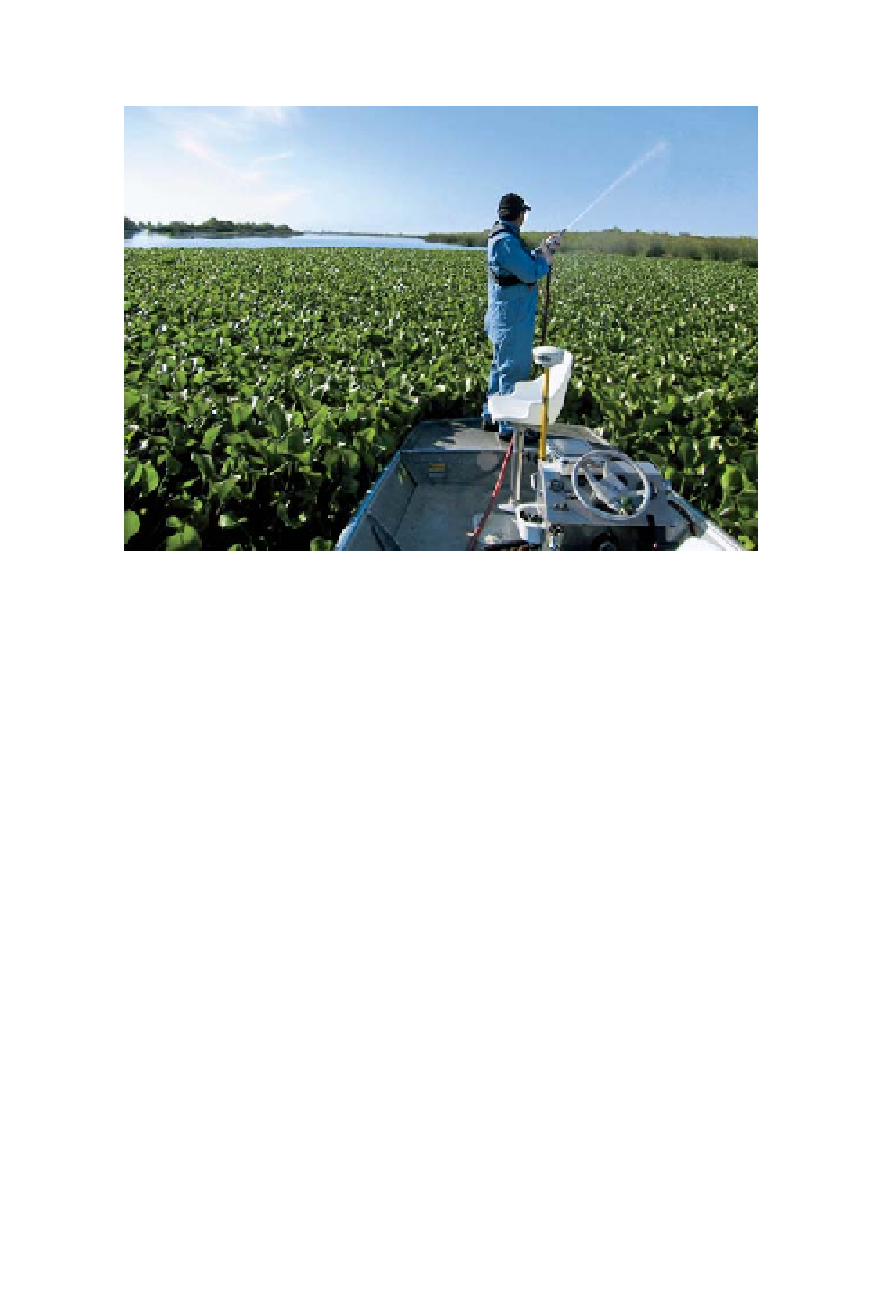Biology Reference
In-Depth Information
Invasive aquatic plants such as water hyacinth (shown here) and hydrilla (
Hydrilla
verticillata
) clog waterways by growing in dense mats. The state sprays infestations
to keep channels open. (Department of Boating and Waterways)
The battle against these and other plants is less about getting rid of the
invaders than about containing and controlling them. Timing the spray-
ings to the plants' seasonal growth cycles, while minimizing side effects on
sensitive species, is a fine art tweaked anew every year. The battle against
exotic crabs, clams, and other critters is a tougher fight. Even targeted poi-
sons don't seem that effective at fully eradicating problem species.
It has taken the construction of “Crabzilla”—an 18-foot-long traveling
screen—to declog South Delta fish salvage facilities of the Chinese Mitten
Crab, for example. But it will take much more than a big piece of metal to
combat the Zebra Mussel, a native of the seas of Eastern Europe. After ar-
riving in the Great Lakes region, this tiny invertebrate quickly spread to 20
states. Worse, it clogged water pipes, intakes, and cooling systems, shut-
ting them down right and left. As a result, water managers from California
to New York now view the Zebra Mussel as a “superorganism” that can live
anywhere and survive anything.
No one really knows how the mussel got to a secluded reservoir near
Hollister in Central California in 2008, though it probably came overland
in the bilge water or hull crannies of a small boat towed behind a trailer
from another state. The year before, the state had begun pulling out all the
stops to prevent this from happening—setting up incident command
posts, border inspections, traffic breaks, and quarantines—because biolo-

